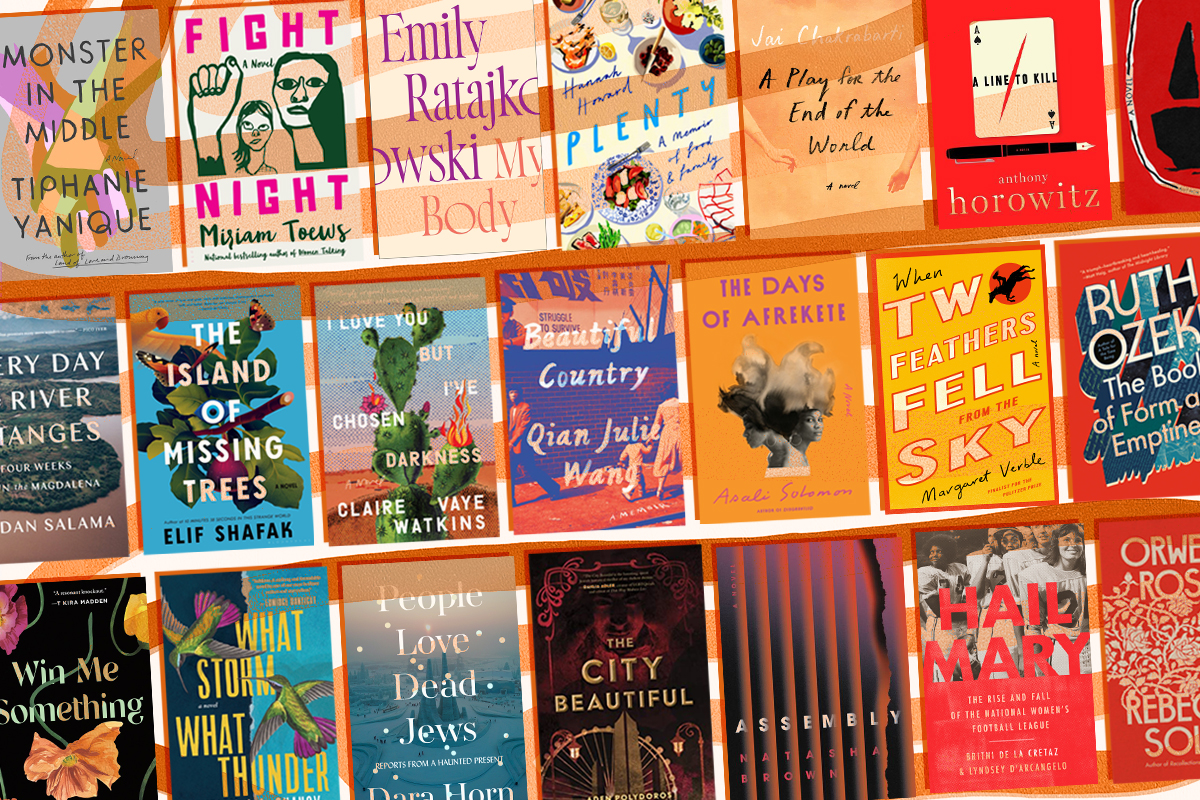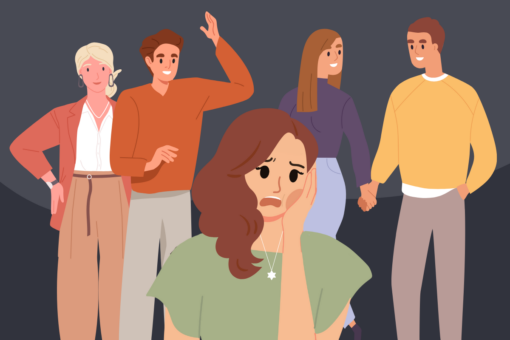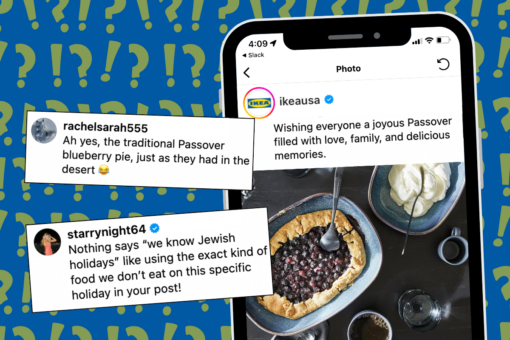Let’s get right to it: There is a plethora of incredible books coming out this fall, and there’s truly something for everyone. As it is every season, this list is shoppable on Bookshop, a platform supporting independent bookstores. So make your midnight margaritas, get on some cozy pajamas and curl up with a good book all autumn long:
1. Our Country Friends by Gary Shteyngart (November)
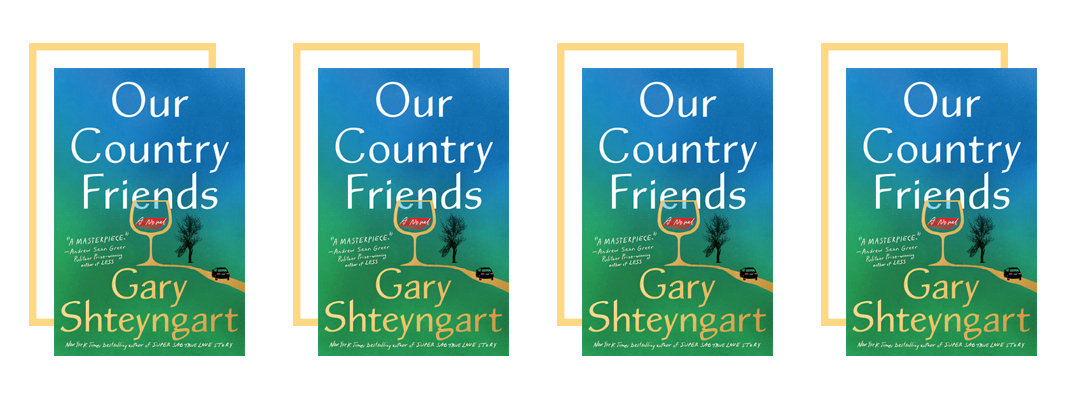
Was I ready to read a novel about the early pandemic? Unclear. Did I thoroughly enjoy “Our Country Friends,” Gary Shteyngart’s new novel about the early pandemic? Absolutely. This is the fifth novel from Shteyngart, a Soviet-born Jewish writer, and one of my favorites. (Though “Super Sad True Love Story” still holds the #1 spot in my heart.) In “Our Country Friends,” the main character is (unsurprising for those familiar with Shteyngart’s writing) a Russian-born novelist. In March 2020, Alexander (Sasha) Senderovsky invites friends to his country house to escape the city for a few weeks alongside himself, his wife, and their daughter. What Sasha — and none of them — know is that those few weeks will turn into months in isolation. The eight friends — if you can call them friends, not all are really friends — must navigate the troubled waters of early COVID together, while figuring out romance, friendship and chosen family.
I can’t sum up the characters better than the description can: “a Russian-born novelist; his Russian-born psychiatrist wife; their precocious child obsessed with K-pop; a struggling Indian American writer; a wildly successful Korean American app developer; a global dandy with three passports; a Southern flamethrower of an essayist; and a movie star, the Actor, whose arrival upsets the equilibrium of this chosen family.” (He’s referred to as “the Actor” throughout.) As Kirkus wrote, “The Great American Pandemic Novel only Shteyngart could write, full of hyphenated identities, killer prose, and wild vitality.” A funny, poignant novel that will actually make you want to read about the pandemic.
Read if you’re into: satire, friendship, drama. Get it here.
2. Beautiful Country: A Memoir by Qian Julie Wang (September)
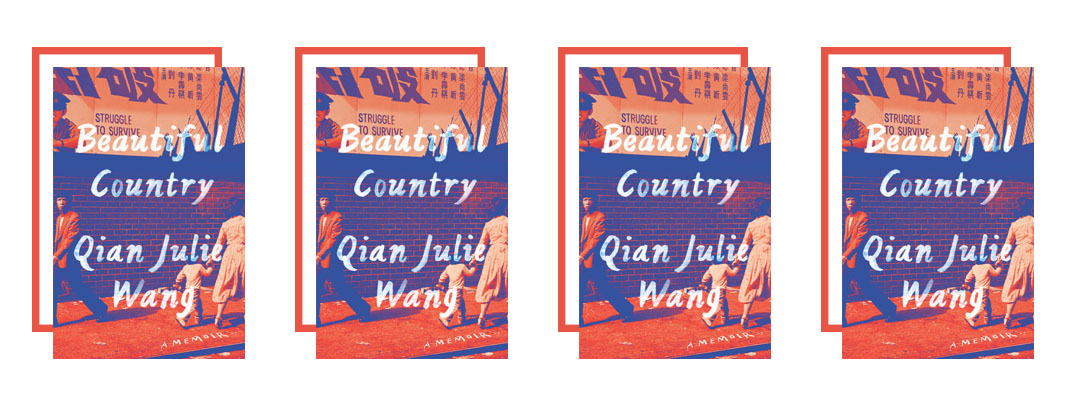
When she was 7 years old, Qian Julie Wang left the world she had known in China for New York City, where her father had immigrated a few years earlier. In New York, her family are undocumented and constantly live in fear of something happening to them. Her parents work a series of terrible jobs in sweatshops and factories, and Wang grows up too quickly as she has to navigate a new school in a new language. Her memoir is dedicated to “all those who remain in the shadows,” as she writes: “May you one day have no reason to fear the light.” Wang, when she’s not writing incredible memoirs, also works as a litigator as the managing partner of Gottlieb & Wang LLP — a firm dedicated to advocating for education and disability rights. She also is the founder and leader of the Jews of Color group at Central Synagogue, where she is a member of the Racial Justice Task Force and the social justice reform leadership. All this is to say: She’s remarkable, and her story is a must-read.
Read if you’re into: Immigrant stories, powerful memoirs. Get it here.
3. The Island of Missing Trees by Elif Shafak (November)
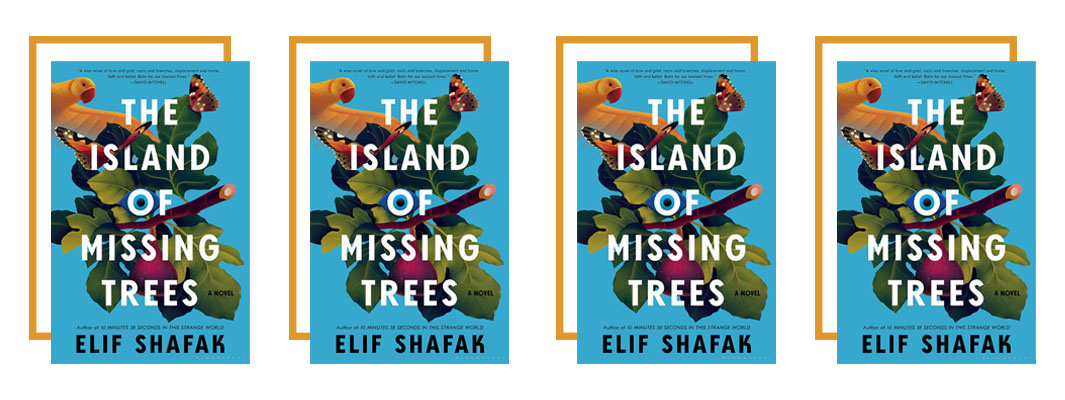
Elif Shafak, a Turkish British novelist, turns her attention to the island of Cyprus in her newest novel, “The Island of Missing Trees.” Set in 1974 and 2010s London, the story is about Kostas, who is Greek and Christian, and Defne, who is Turkish and Muslim. The teens fall in love in Cyprus — a deeply divided land — and meet secretly in a tavern where a fig tree grows in the center. Years later, they move to London to start a life together, bringing a clipping of the fig tree to replant it in foreign soil. There, they raise a daughter, Ada, but refuse to talk about the past. After Defne’s death, Ada, 16, tries to understand her mother’s life, and the secrets and family history that they never talked about.
Shafak’s writing is magnetic, and while reading, one is completely absorbed by the world of both Cyprus and London (the story switches time frames and locations with ease) and the grief of the characters is palpable. And, in a narrative choice I loved, it’s partly narrated by the fig tree in the backyard. You don’t want to miss this one.
Read if you’re into: historical/literary fiction, family secrets, magical realism. Get it here.
4. A Line to Kill by Anthony Horowitz (October)
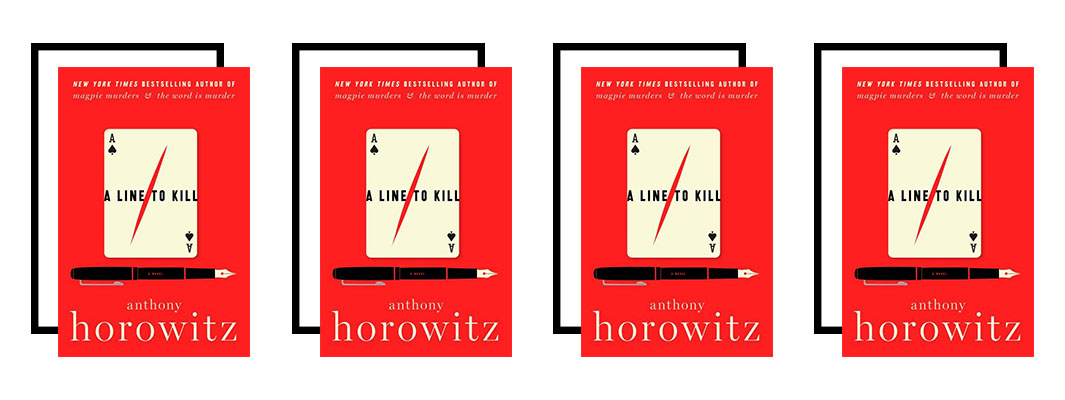
I have loved Anthony Horowitz’s books since his young adult “Alex Rider” series, so when he started writing mysteries for adults, I was fully in. “A Line to Kill” is the third in the Jewish author’s mystery series (start with “The Word Is Murder” and “The Sentence Is Death” before this one) and the plot once again follows a fictional version of Horowitz as he solves a mystery alongside ex-detective Daniel Hawthorne. Horowitz and Hawthorne are invited to a literary festival on Alderney, a small island off the coast of England, to promote their first book. But there, they don’t expect to find themselves thrown into a murder investigation when a wealthy resident is found dead under very mysterious circumstances. Alderney is locked down — Horowitz, Hawthorne and the other authors aren’t allowed to leave even if they wanted to — as various forces on the island collide.
Read if you’re into: smart murder mysteries! Get it here.
5. Every Day the River Changes by Jordan Salama (November)
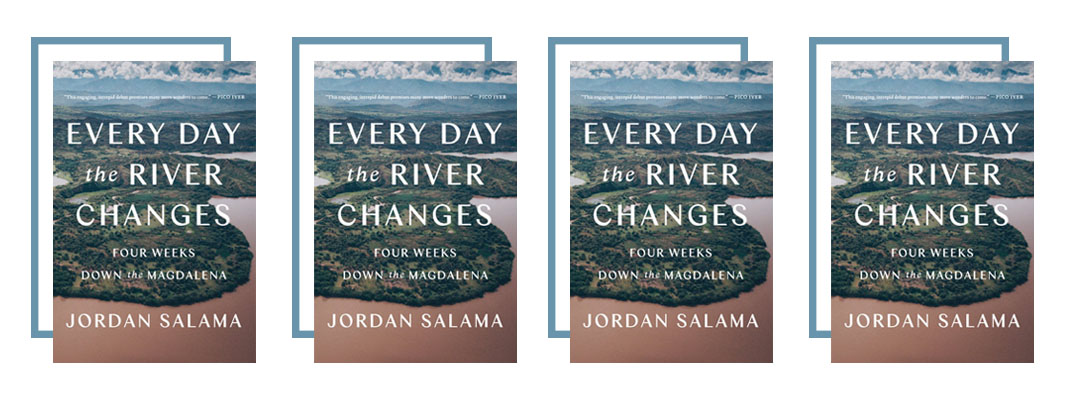
When he was a senior in college, Jordan Salama journeyed down Colombia’s Magdalena River, a nearly thousand-mile river down the heart of the Latin American country. Salama, the son of a Syrian Argentinian Jewish father and an Iraqi Jewish mother, writes about never feeling truly at home in the United States. “So strange as it is, I’ve found that the more I travel to communities themselves out of the way and misunderstood, the more I’m forced to explain myself, over and over again, to different kinds of people I meet — and the better sense I’m able to make of my own identity once I’m back home.” Salama’s journey takes him from the Magdalena’s source in the Andes to its mouth on the Caribbean coast, where he travels by boat, bus and more to traverse the 2,500 miles. He never truly traveled alone — he made sure he was always meeting up with someone for each leg of the trip — and while the travelogue was originally for his senior undergraduate thesis, it turned into an impressive debut.
Read if you’re into: travelogues, Latin America. Get it here.
6. A Play for the End of the World by Jai Chakrabarti (September)
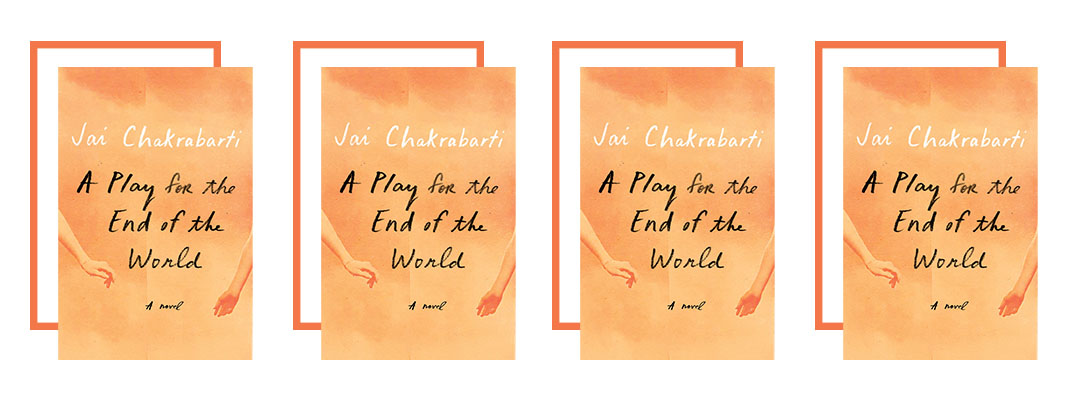
Jai Chakrabarti’s debut novel tells the story of a play: “The Post Office” by Bengali poet Rabindranath Tagore. In the Warsaw Ghetto during the Holocaust, Janusz Korczak — known as Pan Doktor to the orphans he supervised — mounted a production of “The Post Office” during the Holocaust. Janusz hoped the story of Amal, a boy confined to home because of an incurable disease who then dies, would help the Jewish children in his care make some sense of the horrors that awaited them. This really happened.
In Chakrabarti’s novel, one of the Jewish orphans from the Warsaw Ghetto, Jaryk, escapes the transport to Treblinka. (More likely, none of the 192 orphans survived.) After the war, Jaryk reunites with Misha, who worked at the orphanage, in a displaced persons camp, and the two of them move to New York. There, Jaryk tries to leave his past — and his survivor’s guilt — behind, as Misha wants to talk about it constantly. When Misha learns “The Post Office” is being performed in West Bengal, he makes every effort to convince Jaryk to travel with him, but Jaryk, having just begun a new (really, his only) relationship with a young woman named Lucy, refuses. In India, Misha dies, so Jaryk, devastated, decides to fly across the world and pick up where his dearest friend left off. What results is a moving story on grief, surviving atrocities and finding love. Note: If you’re someone who easily cries (hello, same), you will cry reading this.
Read if you’re into: Holocaust survival stories, Indian politics, and so, so much more. Get it here.
7. Orwell’s Roses by Rebecca Solnit (October)
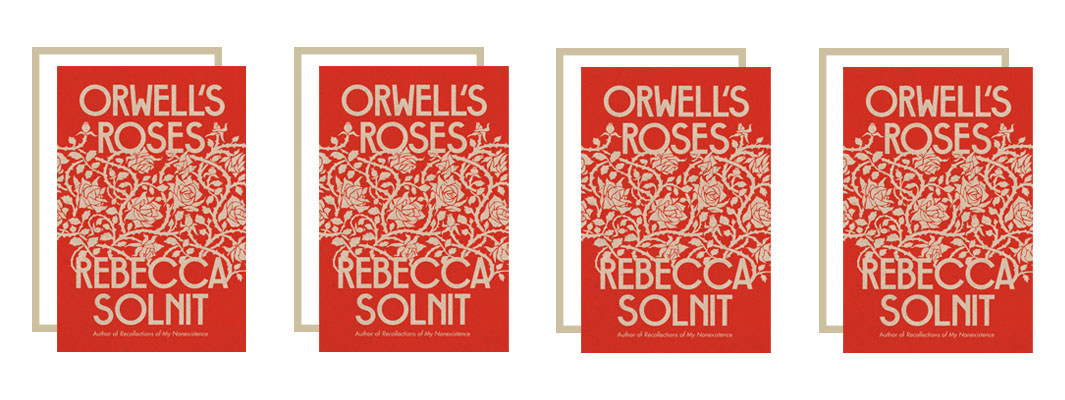
Look, I got engaged this summer while reading this book (yes, he proposed while we were reading, ideal scenario for me)… so there was no way I wasn’t going to include it on my fall books preview. But I promise it’s not just a sentimental inclusion here: “Orwell’s Roses” is a genuinely good read. Author Rebecca Solnit, who has a Jewish father, writes an alternative biography of George Orwell — not about his career, or his life, but on his rose garden (which, of course, becomes a lens to analyze his career and his life). “In the year 1936 a writer planted roses,” she begins, before diving into her quest to see if his roses are still alive, among many, many other interesting stories. By focusing on his love of gardening and roses, Solnit takes the readers through the life of the famous writer — with a few enjoyable diversions, like on the suffragists’ song “Bread and Roses,” the rose trade in Bogotá, Ralph Lauren’s nostalgic floral prints, photographer Tina Modotti and more. Yet, she never loses sight of Orwell and the joy he got from the natural world.
Read if you’re into: George Orwell, biographies, Rebecca Solnit’s writing!! Get it here.
8. I Love You But I’ve Chosen Darkness by Claire Vaye Watkins (October)
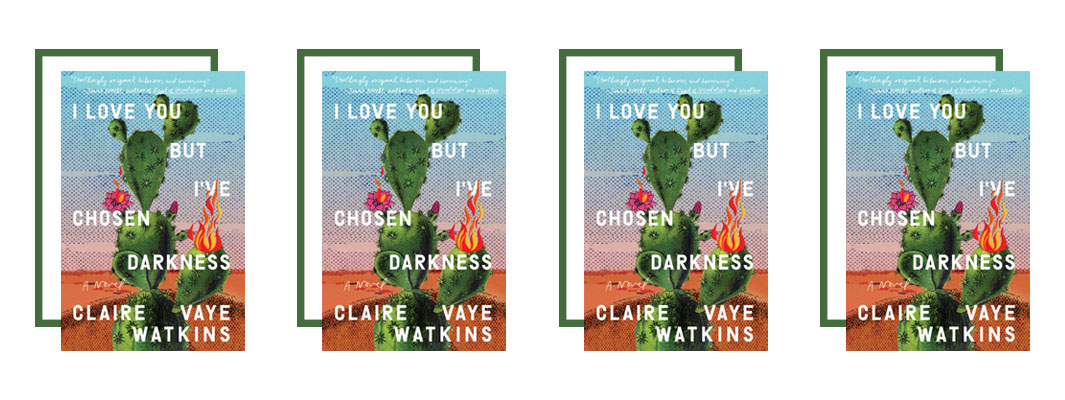
How could you not be obsessed with this title?! “I Love You But I’ve Chosen Darkness” is a simply incredible title, and the novel within definitely lives up to it. As Jenny Offill blurbed: “There’s some kind of genius sorcery in this novel. It’s startlingly original, hilarious and harrowing by turns, finally transcendent. Watkins writes like an avenging angel. It’s thrilling and terrifying to stand in her wake.” Claire Vaye Watkins’s novel tells the story of Claire, a writer who leaves behind her husband and baby daughter for a speaking engagement in Reno — and doesn’t go back. The temporary freedom from motherhood and marriage becomes extended again and again as she keeps delaying her return. Soon, she gets sucked further into her past — which includes grappling with an ex-boyfriend who died many years ago, her father, who was part of the “Manson Family” cult, and her mother, whose teenage letters are interwoven throughout the narrative. As she searches for meaning, or just anything outside of her everyday life, what emerges is a compelling portrait of a woman on the brink.
Read if you’re into: dark humor, motherhood, literary fiction. Get it here.
9. A Marvellous Light by Freya Marske (November)
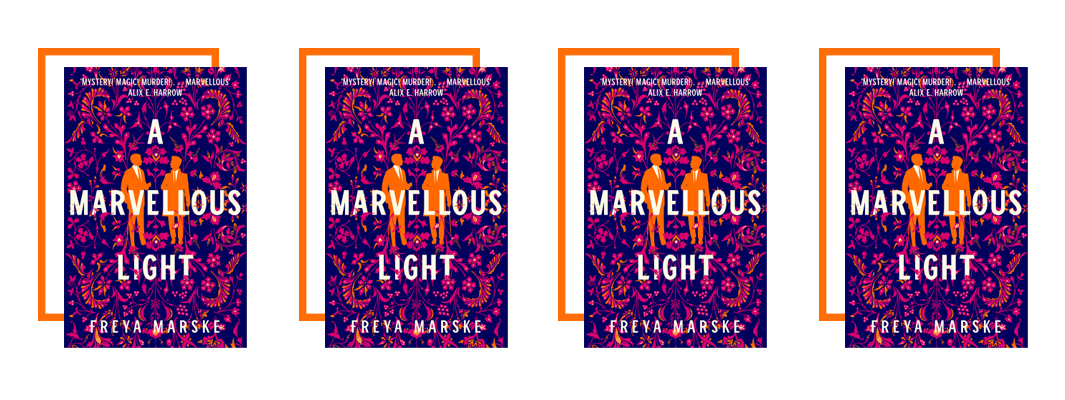
“A Marvellous Light” is set in Edwardian England — yet not the England of our history books, but one full of magic and conspiracies. At the heart of Freya Marske’s story is two men: Robin Blyth, a titled British civil servant, and Edwin Courcey, a magical librarian. After the disappearance of a man named Reggie, Robin is appointed to a government position he knows nothing about — which turns out to be a liaison position between the British government and the magical world. His magic counterpart is Edwin, and the two of them set out to understand why Reggie disappeared — and get wrapped up in a dangerous plot that threatens the magic of every British magician. Along the way, there’s a slow burn romance, complicated family dynamics and a love for libraries and books.
I love how Marske describes her novel: “a historical fantasy wrapped tightly around a romance with some large dollops of deadly peril and curse-breaking, and… a fond nod to the grand English tradition of manor house murder mysteries. It’s about the scars left by our upbringings, falling in love where you don’t expect it, reframing powerlessness, and the deep responsibilities we owe to the places we claim as our homes.” Plus, “A Marvellous Light” is the first in a planned trilogy, so if you want to be one step ahead of everyone’s obsession, read this ASAP.
Read if you’re into: historical fantasy! Magic! Gay romance! England! “Bridgerton” vibes! Fantasy! Get it here.
10. Assembly by Natasha Brown (September)

The unnamed protagonist of Natasha Brown’s “Assembly” is a Black British woman; the readers follow her as she prepares for, and then attends, a garden party at her white boyfriend’s family estate in the English countryside. She’s also just been given a promotion at work and is dealing with a cancer diagnosis. The slim novel is poetic at times as it dives into what it means to be a Black British woman today, and how success doesn’t translate to any sort of shield against racism. As a review in The Guardian writes, “Her heroine has done everything she was supposed to do and yet it is still not enough.” It will never be enough — and the narrator’s decision with regard to her cancer treatment may be shocking to some, but makes sense within the context of the story.
Brown, herself a Black British woman who worked in finance until the publication of this book, explains, “I feel we read so many books about a guy or a woman who has it all, but still isn’t totally happy. As people of color, we don’t get that narrative, because it’s so rare we even see a character who has all of those things – let alone is dissatisfied with them. I wanted to say, ‘We can have a dissatisfaction story, too.’” A powerful novel on dissatisfaction — and what it means to assimilate under the pain of institutional racism.
Read if you’re into: short novels, thinking about modern racism, particularly in England. Get it here.
11. People Love Dead Jews: Reports from a Haunted Present by Dara Horn (September)
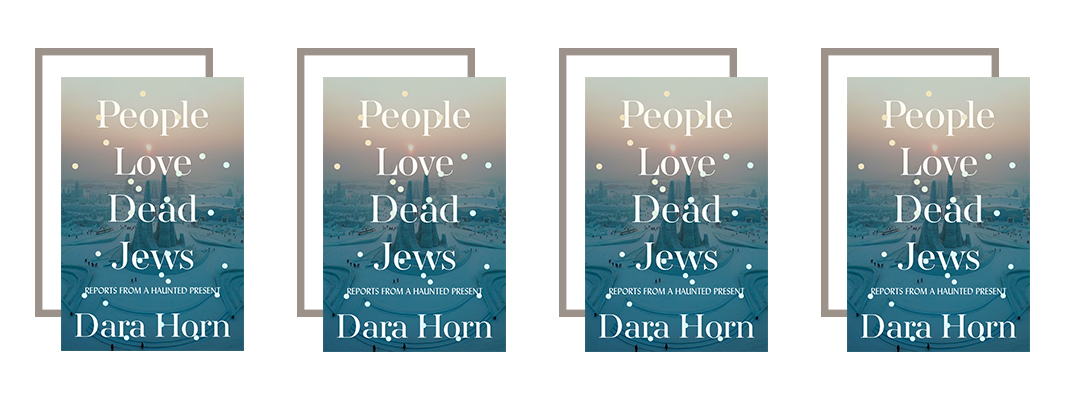
“I had mistaken the enormous public interest in past Jewish suffering for a sign of respect for living Jews. I was very wrong,” writes Dara Horn in the introduction to her new essay collection, “People Love Dead Jews: Reports from a Haunted Present.” The essays dive into the myriad ways people — here, meaning non-Jews — think more about dead Jews than alive ones. There are essays titled “Frozen Jews” (about Harbin, China), “Executed Jews” (about executed Soviet artists and writers), “Dead Jews of the Desert” (about abandoned synagogues in North Africa and the Middle East) and more. Other topics range from Varian Fry, a righteous gentile, to the antisemitic attacks in Pittsburgh, Poway and Jersey City. My favorite was “Fictional Dead Jews,” where she critiques bestselling Holocaust novels for being “uplifting” and “relatable,” and asks why Holocaust novels that showcase the realities of life written by Jews are not the publishing success story. (You can guess why.)
Horn is clearly exhausted about thinking about dead Jews, and about antisemitism, and you can feel her emotion through the page. But she channels the emotion to weave together a large amount of stories — from Russian Jews living in China to Daf Yomi — and what results is a compelling series of essays.
Read if you’re into: thinking about Jewishness, Jews, and antisemitism. Get it here.
12. Still Life by Sarah Winman (November)
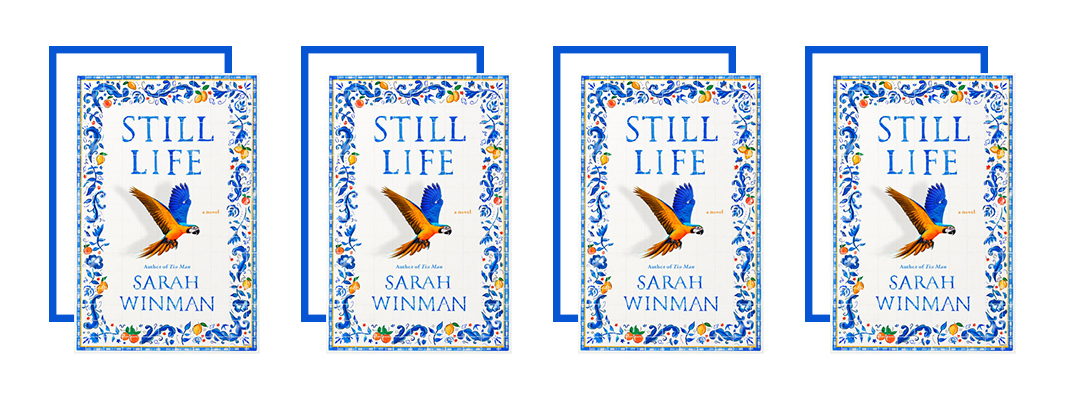
In Tuscany, in 1944, a British soldier, Ulysses Temper, finds himself looking at looted Nazi artwork with Evelyn Skinner, a middle-aged art historian. Ulysses and Evelyn strike up an unlikely friendship — one that will change both their lives. Returning back to England, Ulysses falls back in with his friends at a local pub, including his ex (maybe not ex) Peg, but before long, an unexpected inheritance from a man whose life he saved during the war brings Ulysses back to Florence, where he starts anew.
I loved this line from a review in The Irish Times: “The novel presupposes that magic is all around us — perhaps we just call it other things, superstition, coincidence, serendipity, instinct, luck. And it offers a rich education in art appreciation and social history. All of which, when delivered with the author’s technical wizardry, elevates the work as one that will resonate long after this particular moment in time. It is timeless, not trendy; proactive, not reactive.” “Still Life” is a lot of things — a history of Italy in the post-war years, an ode to chosen families, a homage to “A Room with a View” by E.M. Forster, a reminder of the importance of art and art history — but most of all, it’s just a really good story.
Read if you’re into: chosen families, Italy, historical fiction, art history. Get it here.
13. My Body by Emily Ratajkowski (November)
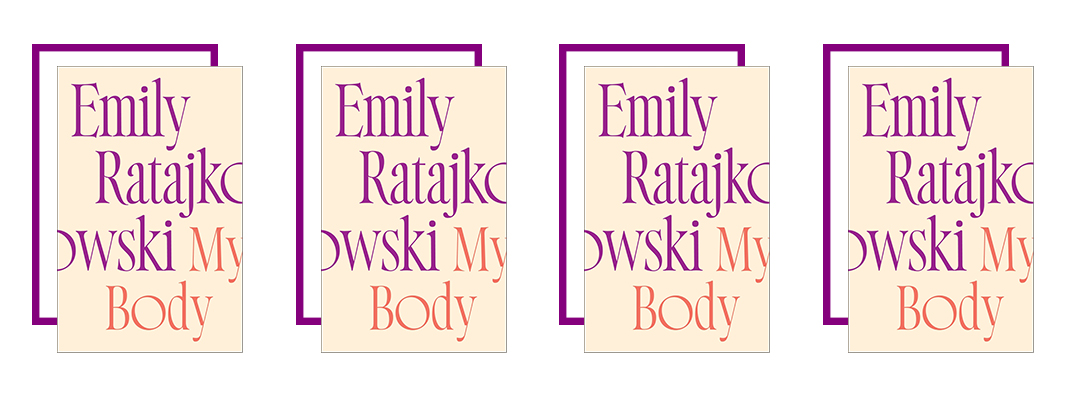
Emily Ratajkowski has a famous face, but do you know the woman behind the face? The Jewish model and actress shot to fame in a music video, but has gone on to use her platform to speak about issues that matter to her — and is now taking her talents to essay writing. In September 2014, she was the victim of a celebrity hacking when her nudes were stolen and posted to the internet. In 2020, she wrote about this moment for The Cut in an essay titled “When does a model own her own image?”
In “My Body,” Ratajkowski talks about these issues further. The collection is touted as “a profoundly personal exploration of feminism, sexuality, and power, of men’s treatment of women and women’s rationalizations for accepting that treatment.” I really enjoyed how Vogue sums it up: “‘My Body’ is a memoir, but it’s also… a slow, complicated indictment of a profession and the people who propel it. Ratajkowski doesn’t so much direct blame at any one person or organization as paint a personal picture of what it was like for her to be young, naive, ambitious, and smart—and to feel reduced, far too often, to a collection of body parts.” And as one of the most famous faces (and bodies) in the world, there’s perhaps no one better suited to write on the subject.
Read if you’re into: well, exploring “feminism, sexuality, and power, of men’s treatment of women and women’s rationalizations for accepting that treatment.” Also, Emily Ratajkowski. Get it here.
14. The Book of Form and Emptiness by Ruth Ozeki (September)
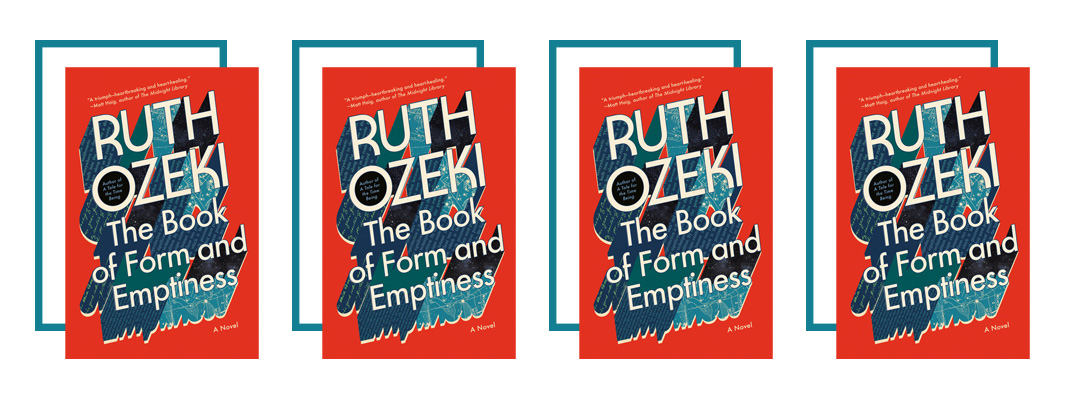
Ruth Ozeki’s “A Tale for the Time Being” is one of my all-time favorite books, so I was beyond excited to read her newest novel, “The Book of Form and Emptiness.” The book tells the story of, well, a book. Benny Oh is 13 years old, and his father, Kenji, has just been killed in a tragic accident. Kenji was a Japanese jazz clarinetist who played with a klezmer band. After he dies, Benny’s mom, Annabelle, retreats into work and stops caring about much of anything, and Benny starts hearing voices — specifically voices of objects, like books and lettuce and shoes and shower heads. When Annabelle’s job moves from in-person to remote, she starts hoarding, and the voices of the objects become too much for Benny to ignore. After an incident at school, he is hospitalized in a pediatric psychiatric ward, and when he’s released, he finds refuge in the local library — where he meets his own book who narrates Benny’s life (a book narrates this book, yes).
Ozeki, who is not just a novelist but also a Zen Buddhist priest and a filmmaker, infuses the story with Zen Buddhism; for her, the very idea of fiction is Buddhist, and she sees her newest novel as a “cousin” to “A Tale for the Time Being.” As she explains, “The new book draws on Zen principles of interconnectedness and impermanence (the form and emptiness of its title) to examine our relationship with the material world and the planet. But at its heart, it is the story about a boy and a book, who helps him find his voice and teaches him how to listen to what really matters.” At its core, “The Book of Form and Emptiness” is a moving story of coming of age while dealing with immense grief. Not to be missed.
Read if you’re into: processing grief, postmodern storytelling, books and libraries. Get it here.
15. Win Me Something by Kyle Lucia Wu (November)

In Kyle Lucia Wu’s debut novel, her protagonist, Willa, stumbles into a job as a live-in nanny. Willa, a biracial Chinese American, never felt rooted in her life — her parents divorced when she was young, and both started new families, seemingly moving on without her. So when she starts nannying for precocious 10-year-old Bijou, the daughter of wealthy white parents in Tribeca, she realizes how much was missing from her own childhood. Interspersed with flashbacks, Willa’s story — and figuring out her sense of self — truly leaps off the page. As Alma contributor T Kira Madden writes, “In ‘Win Me Something,’ Kyle Lucia Wu examines the biracial experience with razor sharp precision, nuance, and profound feeling. Her prose radiates off the page, with every color, character, and scrap of food animating the world of this story, all of it asking who, and what, is of value in America? I love the gentle candor of Wu’s prose, the sneaky devastation. Her debut is a resonant knockout.” A knockout indeed.
Read if you’re into: coming of age, hyphenated identities, Asian American stories. Get it here.
16. Monster in the Middle by Tiphanie Yanique (October)
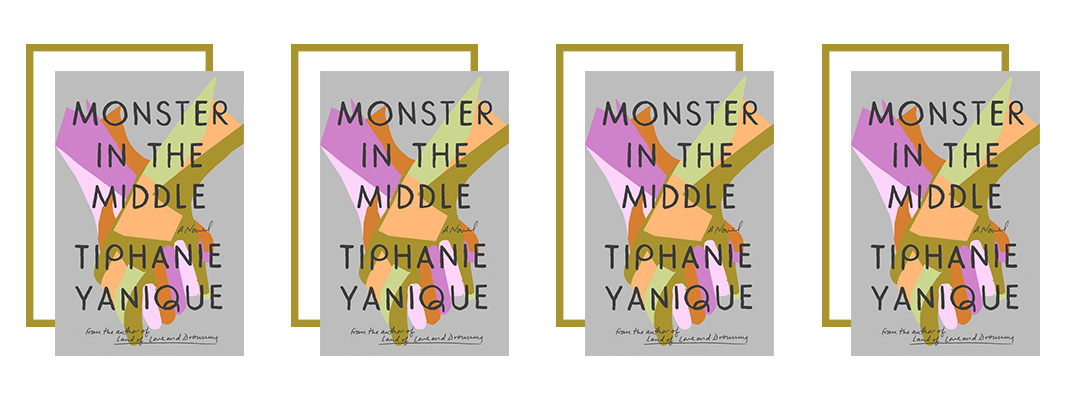
“Monster in the Middle” is the story of Fly and Stela. Fly is a Black American musician; Stela is a Catholic science teacher from the Caribbean. Fly and Stela don’t meet until near the end of the book, however; instead, Tiphanie Yanique brilliantly crafts each of their stories separately — so you meet their parents, their first loves, and really understand them, before bringing them together. As she explains, “When you marry someone, you marry their whole family.” The story travels from the American South to Ghana to the Virgin Islands. As the description explains, “in order to answer the question ‘Who are we meant to be with?’ we must first understand who we are and how we came to be.” Each of Fly and Stela’s stories could stand on their own, but when the two finally meet, it’s simply perfection. The novel brings us through 2020 — and the ending left me truly speechless. So can you all read it so we can discuss? (Seriously, read this.)
Read if you’re into: complicated love stories, historical fiction. Get it here.
17. Tacky: Love Letters to the Worst Culture We Have to Offer by Rax King (November)

Jewish author Rax King’s debut about low culture and bad taste dives into all the ways “tacky” pop culture shaped her coming-of-age. In 14 essays, she covers everything from “Jersey Shore” to Hot Topic to Cheesecake Factory to the Sims, while also writing with clarity about her own girlhood and abusive marriage. “As far as I’m concerned,” King explains, “tackiness is joyfulness. To be proudly tacky, your aperture for all the too-much feelings—angst, desire, joy—must be all the way open. You’ve got to be so much more ready to feel everything than anyone probably wants to be. It’s a brutal way to live.” Yet, it’s how King has lived her life, and “Tacky” as a collection is not just a tribute to her skill as an essayist but a profound tribute to all things our culture has deemed low-brow.
My favorite essay is “The Burial of Samantha Jones,” where King writes about how she took inspiration from Samantha in “Sex and the City” and tried to apply her carefree sex ethos to her own life — with mixed results. It’s King at her best: honest, funny and smart pop culture commentary with engrossing storytelling.
Read if you’re into: early 2000s pop culture. Also, essay collections, coming-of-age stories. Get it here.
18. The Sentence by Louise Erdrich (November)
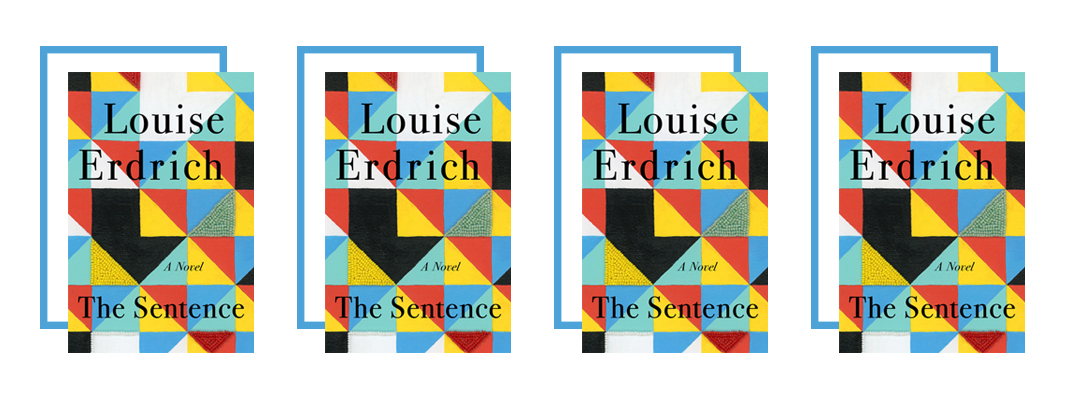
Louise Erdrich’s latest novel is the tale of Tookie, an Ojibwe woman who, after her release from prison, goes to work at a local Minneapolis bookstore dedicated to Native American works. She survived imprisonment by reading as much as she could, and upon release, rebuilds her life through books. When the store’s most annoying customer, Flora — a white woman who tries to pass herself off as Indigenous — dies, her ghost refuses to leave and haunts Tookie, setting off a chain of events with the pandemic looming and the political upheaval. Tookie tries to solve the mystery of why Flora is still there with assistance from Pollux, her husband, a former tribal police officer, Asema, a fellow bookseller, and a whole host of others.
“The Sentence” is set, largely, at a fictional bookstore based off Erdrich’s own Birchbark Books, an independent bookstore in Minneapolis dedicated to Native American literature, history and culture, with a fictionalized Louise as a character in the store. Taking place from All Soul’s Day 2019 to All Soul’s Day 2020, “The Sentence” masterfully captures the trauma of 2020 — and the realities of those just trying to survive “a year of grief, astonishment, isolation, and furious reckoning.” Like the other pandemic novels on this list — “Our Country Friends” and “Monster in the Middle” — Erdrich’s novel masterfully brings her readers through the past traumatic year, without it feeling too soon. Don’t miss this one.
Read if you’re into: bookstores, Indigenous narratives, ghost stories, thinking about 2020 in America. Also, Louise Erdrich, duh!! Get it here.
19. Meir Kahane: The Public Life and Political Thought of an American Jewish Radical by Shaul Magid (October)
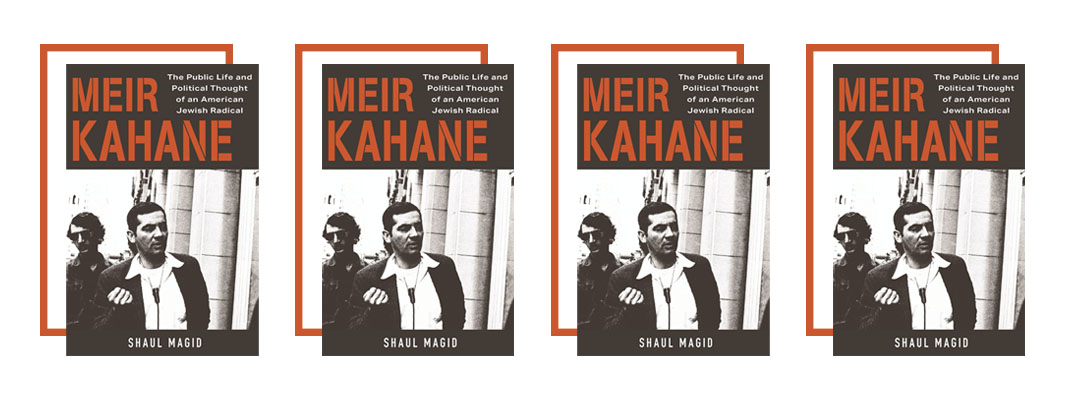
Meir Kahane was a radical American Jewish activist who had a large impact on Israeli politics. Kahane, born in Brooklyn in 1932, was elected to the Israeli Knesset in 1984 on a platform calling for Arabs to be expelled from Israel. But before his violent legacy in Israel, he founded the militant Jewish Defense League (JDL) in 1968. Kahane called for “every Jew a .22” and popularized the slogan “Never Again” — and wanted to change the image of young Jewish men. There has not been a comprehensive study on Kahane’s impact on American Jewry until now.
“Meir Kahane” by Shaul Magid dives into Kahane’s outlook, a man he calls “one of the most divisive Jewish figures of the second half of the twentieth century,” and then explores the myriad ways in which Kahane’s ideas — largely shunned at the time — have moved more mainstream, in both America and Israel. (Disclaimer: I was a research assistant for Shaul Magid as he worked on this book; I also wrote my undergraduate thesis on Meir Kahane and the JDL; I have a lot of thoughts about Kahane but mainly more American Jews should know who he is!) “Kahane makes most Jews uncomfortable, and rightfully so,” Magid writes in the introduction, “and yet without that discomfort it is too easy to miss crucial fissures and gaping holes in understanding the Jewish experience today. Kahane is the Jew whom Jews would like to forget, and yet he keeps coming back to haunt us.” Magid expertly and thoroughly dives into Kahane’s ideology and legacy today, and it’s a critical read for anyone searching to understand contemporary Jewish identity.
Read if you’re into: thinking American Jewish history, and the American Jewish present. Get it here.
20. Fight Night by Miriam Toews (October)
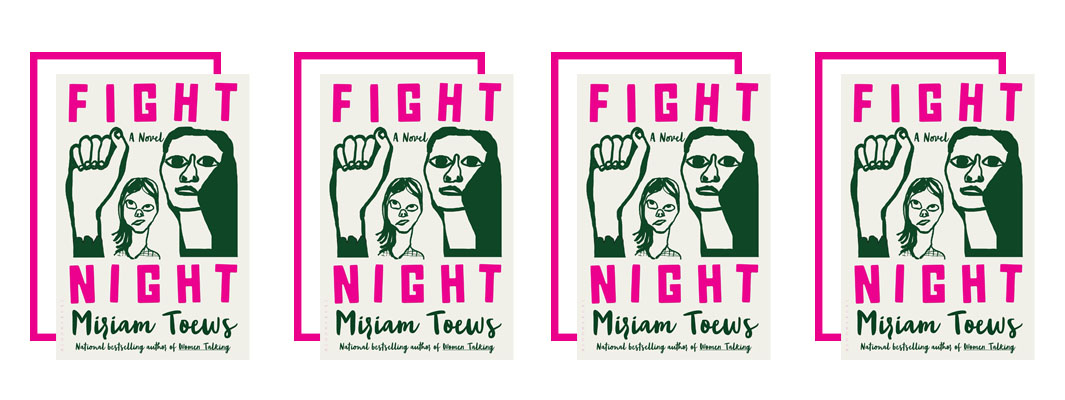
“Fight Night” is the story of Swiv, a 9-year-old who has been suspended from school for fighting. But it’s really the tale of Swiv’s Grandma, Elvira, who has fought for her independence her entire life — starting with her upbringing in a strict religious community through when her health fails her at the end of her life. Miriam Toews, the renowned Canadian writer, grew up the daughter of Mennonite parents. (Her mom’s name, incidentally, is Elvira.) “Fight Night” is about the wisdom that is passed from grandmothers to granddaughters, but also how women must fight to thrive every single day. Swiv and Elvira both narrate “Fight Night,” and Swiv’s mom (Elvira’s daughter) also plays a role in the story — but this is really about the love between a grandmother and her granddaughter, which is something many of us are lucky to understand.
Read if you’re into: grandmother-granddaughter relationships. Get it here.
21. Civilizations by Laurent Binet, translated by Sam Taylor (September)
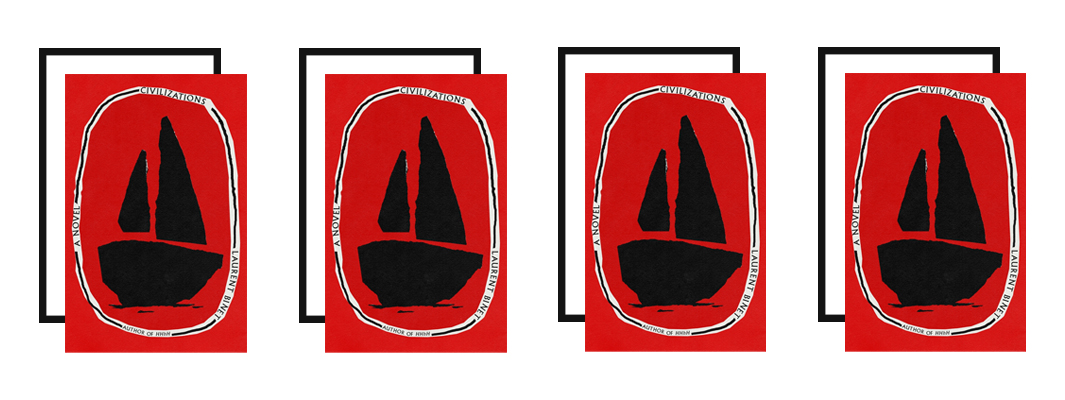
What if the Incas and Aztec nations invaded 16th century Europe, instead of the other way around? What if, in 1492, Columbus did not “discover” America? That’s the premise of “Civilizations,” the newest novel from Laurent Binet, translated from the French by Sam Taylor. “There’s something melancholic in my book,” Binet said in an interview, “because it offers the conquered a revenge that they never really had.” In a mix of historical characters (including Columbus and Cervantes) and fictional ones, Binet really lets himself imagine another world so different from our own, and it’s easy to get lost in his storytelling (he’s not new to alternative history; in his debut “HHhH,” he imagines a world in which Reinhard Heydrich, the architect of the Final Solution, was assassinated). As Publisher’s Weekly writes, it is a “a daring and often delightful counterfactual history of transatlantic conquest.”
Read if you’re into: revisionist histories, reading books before they become TV shows. Get it here.
22. The City Beautiful by Aden Polydoros (October)
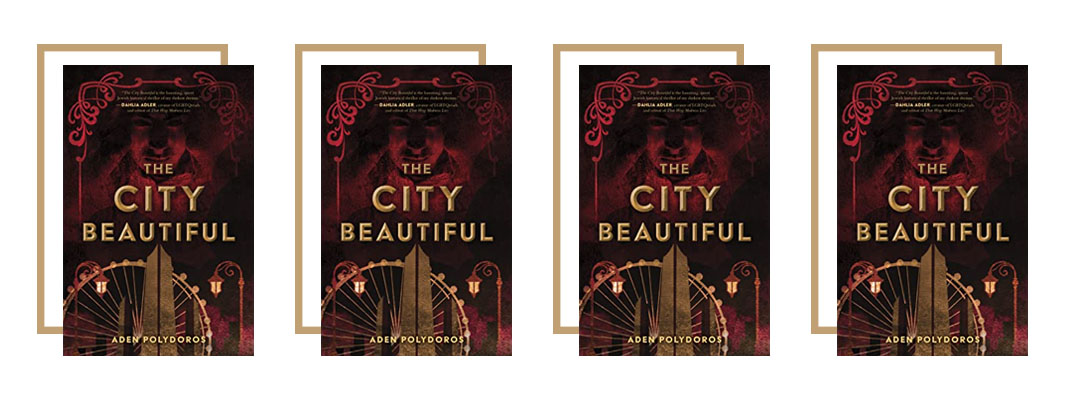
OK, this may be the most Jewish book on this fall books preview, and there are a lot of Jewish books on this preview! Set in Chicago in 1893, the story focuses on Alter Rosen, an observant young Jew working at a newspaper setting type, hoping to save up to bring his mother and sisters over from Romania. He volunteers at a chevra kadisha, the local burial society, and when his roommate, Yakov, is murdered, Alter realizes that young Jewish men disappearing are part of a bigger conspiracy. Soon, he sets out to solve the murder with the help of Frankie, a dangerous boy from his past, and Raizel, a headstrong young woman. Aden Polydoros writes in his author’s note that the book was inspired by “anger and indignation — at the anti-Semitism I have faced in my own life, at the perpetual cycle of violence, at the fact that I cannot go into a synagogue or Jewish community center without first thinking of where a shooter might enter. I wanted to write a book where the Jewish characters… fought back and rose above the people who wished to them harm.”
I loved how “The City Beautiful” was so effortlessly Jewish — in its reflections on Jewish assimilation, immigration, queerness, antisemitism and tradition — while also a compelling fantasy/mystery with elements of Jewish mysticism (dybbuks, or “clinging demons,” play a huge part in the plot). And throw in a gay love story… I mean, did Polydoros literally write this book for the Alma audience!? As Dahlia Adler wrote, “Chillingly sinister, warmly familiar, and breathtakingly transportive, ‘The City Beautiful’ is the haunting, queer Jewish historical thriller of my darkest dreams.” It truly is.
Read if you’re into: queer Jewish historical fantasy! Also, reading spooky mysteries during a spooky time of year. Get it here.
23. Cloud Cuckoo Land by Anthony Doerr (September)
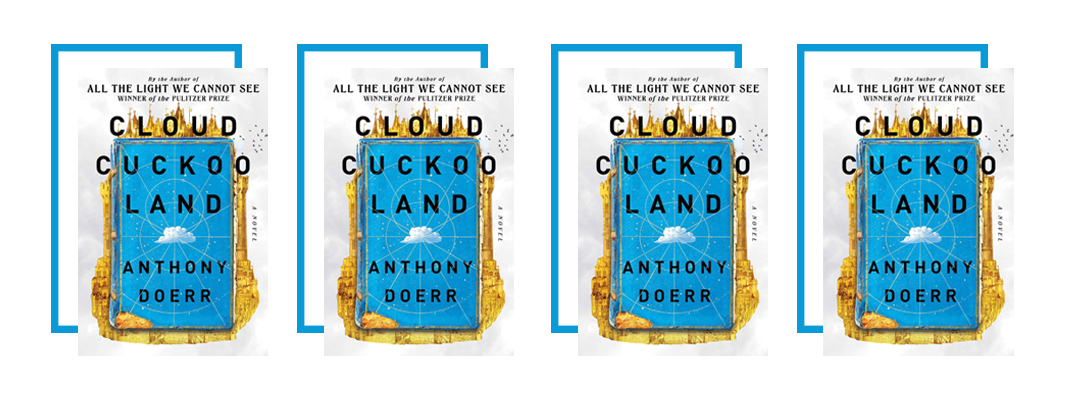 Anthony Doerr’s third novel is set in Constantinople in the 15th century, a small town in present-day Idaho, and on an interstellar ship decades from now. In each of these timelines, there are coming-of-age stories and the story of Aethon, a man who wants to be a bird. There’s Anna, an orphan, and Omeir, a boy turned soldier, in Constantinople, Zeno, an 80-something and Seymour, an idealistic teenager in an Idaho library, and Konstance, on an interstellar ship. Libraries are key parts of each of their stories, as are sieges — often violent. This is Doerr’s first book since his Pulitzer Prize-winning “All the Light We Cannot See,” and it is dedicated to the power of literature. (Doerr also dedicates the book to “the librarians then, now, and in years to come.”) “Cloud Cuckoo Land” begins: “A fourteen-year-old girl sits cross-legged on the floor of a circular vault. A mass of curls haloes her head; her socks are full of holes. This is Konstance.” How could you not want to read that story!?
Anthony Doerr’s third novel is set in Constantinople in the 15th century, a small town in present-day Idaho, and on an interstellar ship decades from now. In each of these timelines, there are coming-of-age stories and the story of Aethon, a man who wants to be a bird. There’s Anna, an orphan, and Omeir, a boy turned soldier, in Constantinople, Zeno, an 80-something and Seymour, an idealistic teenager in an Idaho library, and Konstance, on an interstellar ship. Libraries are key parts of each of their stories, as are sieges — often violent. This is Doerr’s first book since his Pulitzer Prize-winning “All the Light We Cannot See,” and it is dedicated to the power of literature. (Doerr also dedicates the book to “the librarians then, now, and in years to come.”) “Cloud Cuckoo Land” begins: “A fourteen-year-old girl sits cross-legged on the floor of a circular vault. A mass of curls haloes her head; her socks are full of holes. This is Konstance.” How could you not want to read that story!?
Read if you’re into: libraries, storytelling, epics. Get it here.
24. Plenty by Hannah Howard (September)

Hannah Howard, a Jewish food writer (and Alma contributor!), is back with her second memoir. Her first, “Feast: True Love In and Out of the Kitchen,” detailed her struggles with disordered eating while working in New York’s culinary scene. “Plenty: A Memoir of Food and Family,” is a natural continuation of Hannah’s story, but more focused on influential mentors, friends and family in her life. What results is a moving tale of female friendship, and also the story of Hannah’s struggles to have a baby. As Howard says of “Plenty”: “It’s about finding my family: my family of amazing women in the food world, and growing my family.” My favorite parts of the memoir were when she wrote about the friendships in her life that have sustained her. “Despite the patriarchy, these women in food had seen new possibilities and carved out paths to do meaningful, creative work, to nourish each other and the world with food and purpose and potential,” she writes. And we couldn’t be more grateful for Hannah’s work.
Read if you’re into: food, family, motherhood. Get it here.
25. Martita, I Remember You/Martita, te recuerdo by Sandra Cisneros (translated by Liliana Valenzuela) (September)
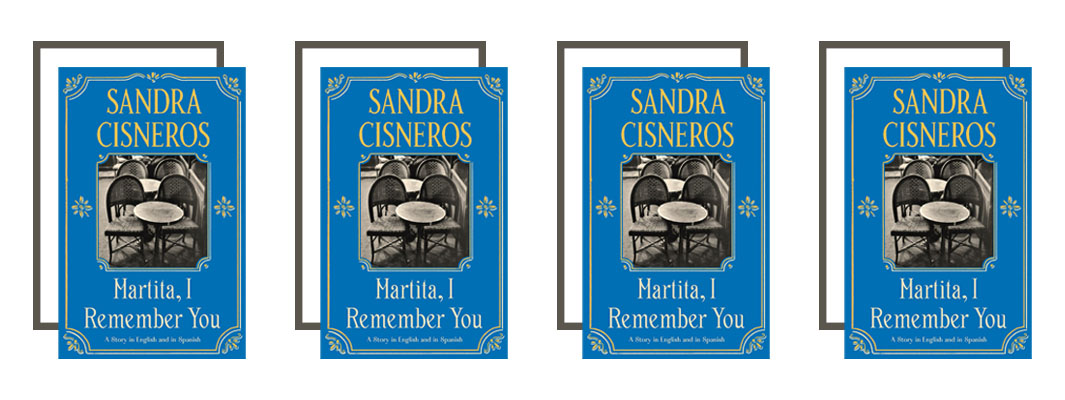
When Corina finds a letter from her long lost friend Marta, she begins to reminisce on the time they shared together in Paris. In a series of vignettes, we learn of how 20-year-old Corina wanted to become a writer, leaving her Mexican family in Chicago behind. She meets Marta from Chile and Paola from Italy, and we learn how they struggled and found each other in a foreign city — and what Corina’s life has become after Paris. “We don’t write each other anymore, but I still think of you, Marta. Un recuerdo. A remembrance, a souvenir, a memory. Te recuerdo, Martita, I remember you,” Corina writes. “Martita, I Remember You/Martita, te recuerdo” is written in English and Spanish, the two versions existing in the same book. The language is poetic. Sandra Cisneros is known for her bestselling novel “The House on Mango Street,” and while this is a shorter story, the magic and power of her writing is ever present.
Read if you’re into: novellas, Paris, friendship. Get it here.
26. The Four Humors by Mina Seçkin (November)
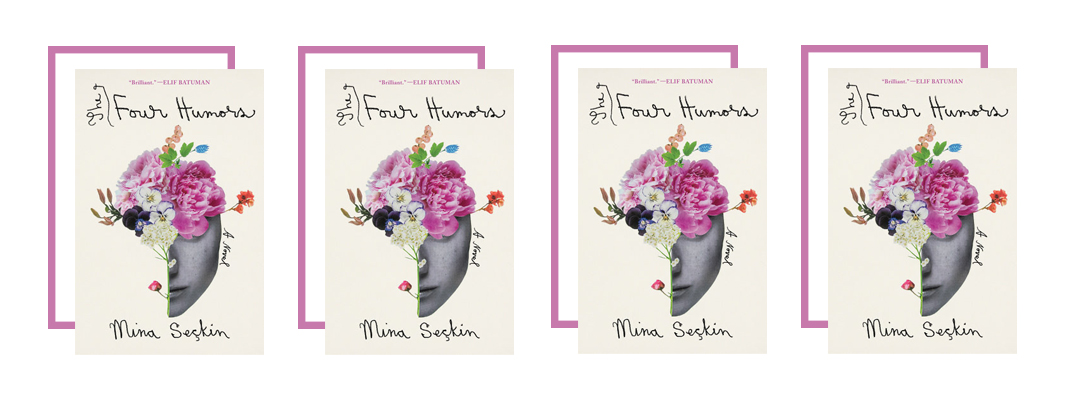
Mina Seçkin’s debut novel, “The Four Humors,” is the story of Sibel, a 20-year-old Turkish American visiting her grandmother in Istanbul for the summer. Sibel’s American boyfriend joins her and gets a job volunteering at an eye hospital, while Sibel spends the summer watching Turkish soap operas and trying to understand her chronic headaches. Instead of turning to a medical diagnosis, she looks to the “four humors” theory of ancient medicine — the four things that determine character, temperament and mood. As Sibel searches for a cure to her illness, we learn about her family and Turkish politics. As Turkish American novelist Elif Batuman wrote, “Mina Seçkin’s brilliant and understated first novel describes a young person’s quest to situate herself geographically, culturally, historically, and physiologically—to map out a place for her inner self in the world, in her family, and in her own body. Funny, heartrending, illuminating, informative, brimming with cultural specificity and human universality.”
This is a funny and loving story for readers of all backgrounds. Seçkin describes the novel as “full of misdiagnoses, thorny Turkish politics, blood, bile, butter, olive oil — yum!” Yum, indeed.
Read if you’re into: women figuring themselves out, contemporary Turkey, grief. Also, beautiful covers. I mean, look at that cover!! Get it here.
27. The Days of Afrekete by Asali Solomon (October)
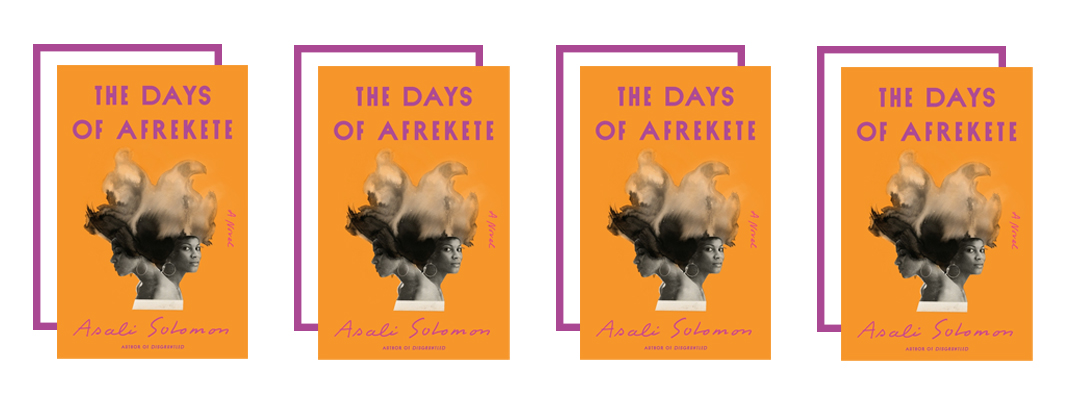
Over the course of one day in Asali Solomon’s “The Days of Afrekete,” we meet two women: Liselle, a woman whose husband has just lost his campaign, and Selena, her old friend from Bryn Mawr, struggling with staying out of a psychiatric hospital. Selena and Liselle met at Bryn Mawr, in the school’s first Black literature course taught by a Black professor. Liselle, preparing to host a dinner party for her husband’s campaign supporters, decides to call Selena on a whim, setting the two of them up for a surprising reunion. The women, now in their middle age, have been on different paths since graduating. Can their lives still change? “Solomon brings wit and incisive commentary to this pristine take on two characters’ fascinating and painful lives,” Publisher’s Weekly writes. Through these two women, the reader gets perspective on a wide range of topics — and they come to life.
Read if you’re into: female friendships, race, politics. Get it here.
28. Hail Mary: The Rise and Fall of the National Women’s Football League by Britni de la Cretaz and Lyndsey D’Arcangelo (November)
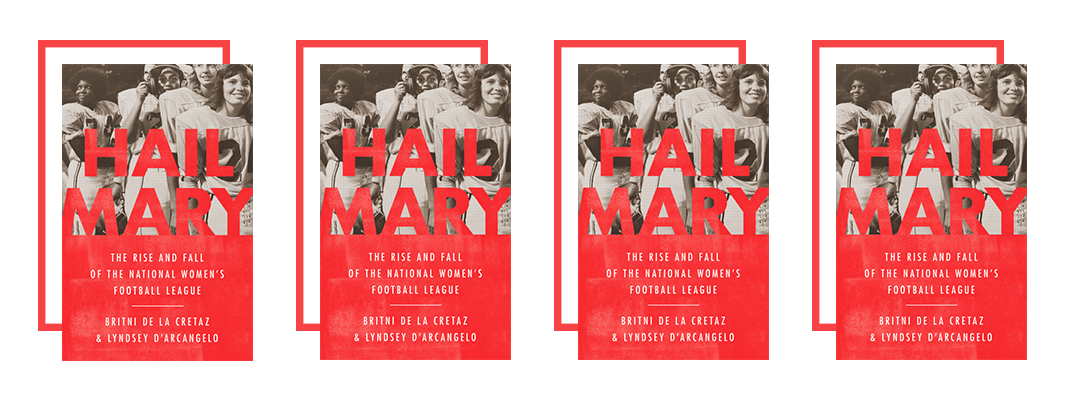
“This is the story of the women who played the game, the glory and pain it brought them, and, ultimately, what it meant to them,” write Britni de la Cretaz and Lyndsey D’Arcangelo in the intro to “Hail Mary,” the history of the National Women’s Football League (NWFL). The NWFL, which existed in the 1970s and ’80s, was a league full of women football teams. The authors bring these women — and their teams, and the struggles they faced, and the joys they felt — to life. The extensive research and reporting that went into the book is clear. I loved it for the simple fact that before “Hail Mary,” I had no idea about women’s football — and I consider myself a women’s sports fan. In the conclusion, de la Cretaz and D’Arcangelo muse on what women’s football can learn from the NWFL and where can they go from here, with no easy answers.
One line has stuck with me since I finished reading: “Often the women athletes we choose to write into the history books are the ones who are extraordinary or remarkable in some way, who have broken records or beaten the odds; women have to be twice as good to even be considered for recognition. But they are all remarkable, simply because they existed at all.” I’m so glad we know the story of the women of the NWFL now.
Read if you’re into: sports! Women in sports!! Also, second wave feminism and Title IX. Get it here.
29. What Storm, What Thunder by Myriam J. A. Chancy (October)
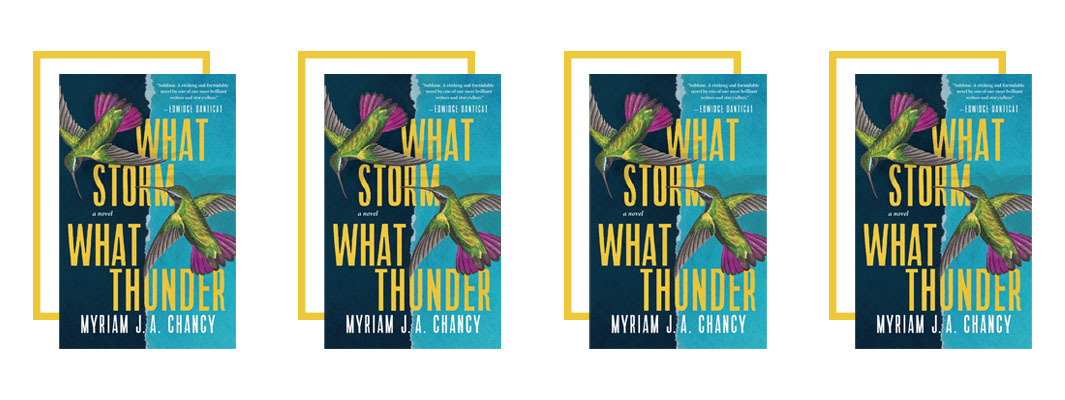
Myriam J.A. Chancy’s “What Storm, What Thunder” is a devastating novel that takes readers through the lives of various Haitians affected by the 2010 earthquake. The catastrophic 7.0 magnitude earthquake struck Haiti on January 12, 2010, and an estimated 250,000 to 300,000 people died. Chancy, a Haitian Canadian American writer, spent years speaking with survivors and masterfully crafts vivid, real characters to offer insight into the disaster that befell Haiti — and what came after. As she explains, “I had a responsibility to the dead. I wanted to capture the way in which lives were disrupted, what those lives may have been like, before, and what might have remained, after.” The characters are all related in some way — there’s Ma Lou, an elderly market woman, her estranged son, Richard, a wealthy businessman, Richard’s daughter, Anne, an architect working in Rwanda, Leopold, a drug trafficker staying at the same hotel as Richard, Sonia, a sex worker at said hotel, her sister, 15-year-old Taffia who faces violence at the displaced persons camp, her brother, Didier, an undocumented cab driver in Boston, and so on. While not everyone survives, the narratives work together effortlessly to paint a portrait of Haiti in 2010. It’s a brutal, extraordinary read on a disaster.
Read if you’re into: not sure if this counts as history, but historical fiction — fiction that brings to life terrible events. Think: beautiful writing on awful subjects. Get it here.
30. Squirrel Hill: The Tree of Life Synagogue Shooting and the Soul of a Neighborhood by Mark Oppenheimer (October)
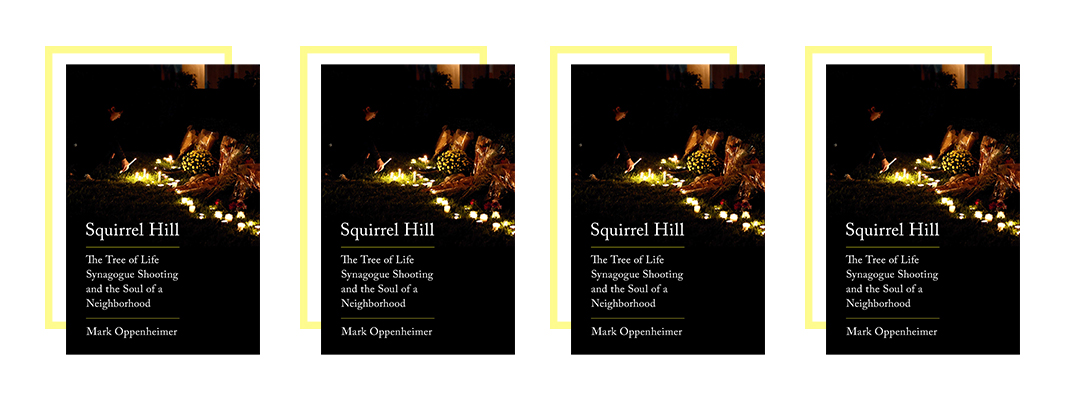
Jewish journalist Mark Oppenheimer’s book looks at the Jewish neighborhood of Squirrel Hill in the aftermath of the Pittsburgh Synagogue Shooting when a gunman entered the Tree of Life Synagogue and murdered 11 Jews. The focus of “Squirrel Hill” is not on the crime, but on the resilience of the neighborhood and the history of the Jews who live there. Oppenheimer’s great-great-great-grandfather cofounded the first Jewish burial society in Squirrel Hill, and he has clear love for the place. “The gunman who at Tree of Life perpetrated the greatest antisemitic attack in American history surely did not know that he was attacking the oldest, most stable, most internally diverse Jewish neighborhood in the United States,” he writes.
Throughout the book, the focus remains on the neighborhood. Oppenheimer speaks with a wide range of residents — Jews and non-Jews alike — as they try to make sense of the tragedy. It’s hard not to get emotional reading, and recounting, that terrible day in October 2018. An essential read on a quintessential Jewish American neighborhood.
Read if you’re into: American Jews, thinking about impacts of antisemitic attacks, very solid reporting. Get it here.
31. When Two Feathers Fell From the Sky by Margaret Verble (October)
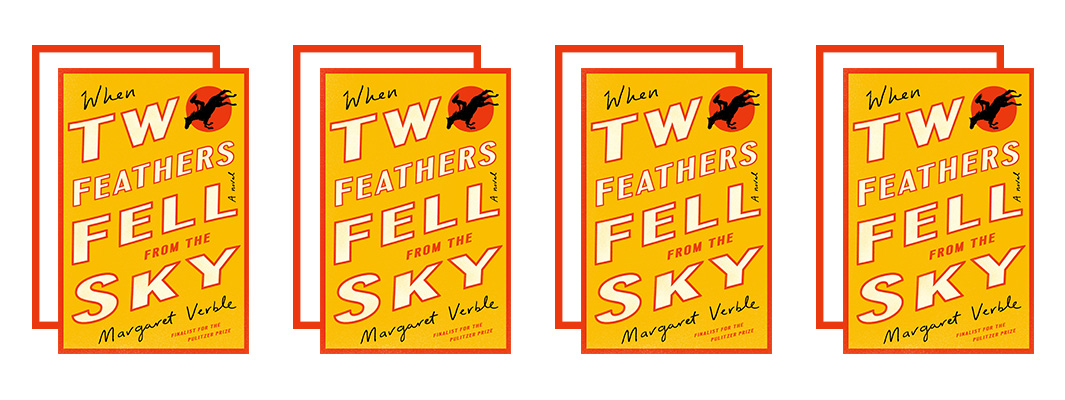
Two Feathers (not her real name) is a Cherokee horse diver who performs at the Glendale Park Zoo. It’s 1926, and while her performance is a hit with crowds, as a Native American woman, she doesn’t fit in racially segregated Nashville. When disaster strikes for Two and her horse, strange happenings begin going on at the zoo, including healthy animals unexpectedly dying young. Alongside Two, her friend Hank Crawford, the son of wealthy Black landowners, and zookeeper Clive — a British WWI vet suffering from PTSD — try to get to the bottom of the mysteries of Glendale. Author Margaret Verble is an enrolled citizen of Cherokee Nation, and has clearly done extensive research about the time period and Glendale Park itself to bring her historical fiction to life. Plus, the added ghost story (I won’t spoil!!) adds a twist to make “When Two Feathers Fell From the Sky” really stand out. A compelling, haunting read full of history.
Read if you’re into: ghost stories, mysteries, Native American history. Get it here.
32. The Magician by Colm Tóibín (September)
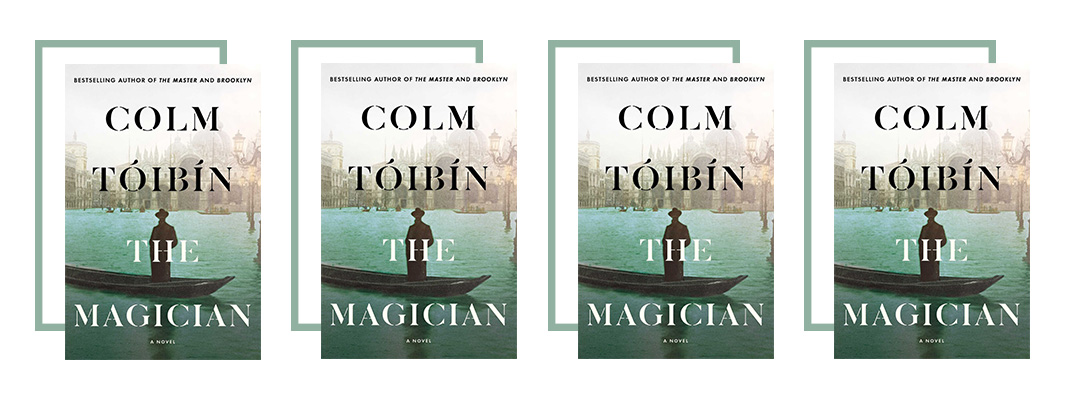
In Irish writer Colm Tóibín’s newest novel, he explores the story of Thomas Mann, the German novelist and Nobel Prize winner. In 1905, Mann married Katia Pringsheim, a German Jewish woman, and they had six children — three of whom became famous writers as well. (Tóibín joked, “I’ll tell you one thing. I do not intend to write another book about a man with six children! They were all very different, and each had to be distinguished and paid attention to.”) His novel is, in essence, a dramatized biography of Mann, tracing his childhood, his closeted homosexuality, his anti-Nazi stance during the rise of Hitler, and the end of his life in America. Mann comes to life through Tóibín’s prose, and you come away really understanding the German writer who had such a profound impact on European literature.
Read if you’re into: historical fiction, fictional biographies… also Colm Tóibín. Get it here.
33. The Book of Magic by Alice Hoffman (October)
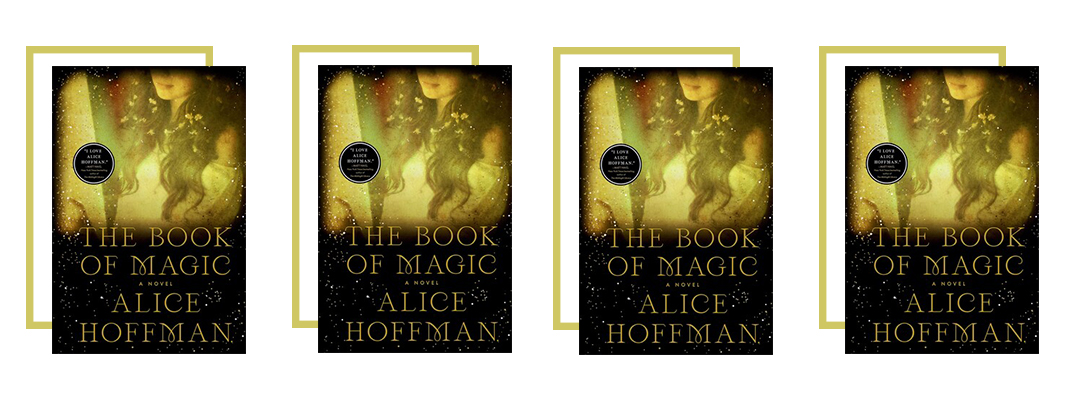
The joy of the last few years has been Alice Hoffman’s return to her “Practical Magic” universe, her 1995 book about the cursed Owens sisters (adapted into a 1998 film of the same name starring Sandra Bullock and Nicole Kidman, essential October viewing). In 2018, there was “The Rules of Magic,” a prequel to “Practical Magic,” followed by “Magic Lessons” in 2020 (the pre-prequel, featuring a dreamy Sephardic Jewish love interest), and now, in 2021, we’re getting the conclusion to this series with “The Book of Magic.” Like the other three, we again return to the Owens family of Salem, this time, focusing on Aunt Jet Owens (brought to life by Dianne Wiest in the film). But, more critically for “Practical Magic” fans here: We finally get the story of what happens next. And, honestly, I can’t resist a magical novel that begins in a library.
Read if you’re into: “Practical Magic,” hello!!! Also, this is the ideal October read. Witches! Magic! Love! Curses! Spooky szn! Get it here.
34. Sankofa by Chibundu Onuzo (October)
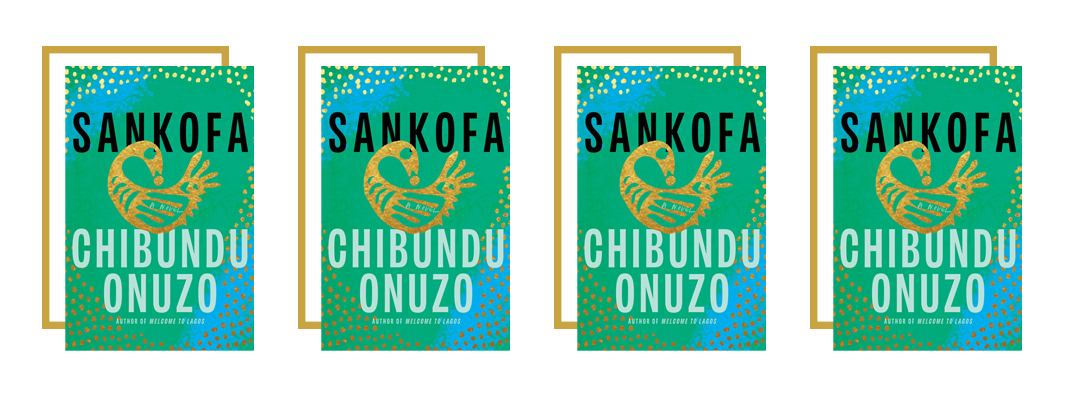
In “Sankofa,” protagonist Anna goes searching for the father she never knew. A mixed-race British woman, she’s having a tough time. Her white mom has passed away, she’s separated from her husband, and their daughter is out of the house. Going through her recently deceased mom’s things, she uncovers her African father’s diaries from the 1970s — and decides to track him down. Her father, Francis, was an international student from the fictional African country of Bamana in London in 1969 when he met her Welsh mom, Bronwen. They had a passionate love affair, but Francis returned home before realizing she was pregnant. So, Anna sets out to meet her father.
The title, “Sankofa,” is the name of a mythical bird that flies with its head backwards; apt for Anna’s story — searching for her future, and who she is, by looking backwards. As the blurb explains (you know I love a good blurb): “‘Sankofa’ expresses the importance of reaching back to knowledge gained in the past and bringing it into the present to address universal questions of race and belonging, the overseas experience for the African diaspora, and the search for a family’s hidden roots.” A fascinating story of family, diaspora, and identity.
Read if you’re into: family stories. It’s marketed as “Girl Woman Other” meets “An American Marriage.” Get it here.
35. All About Me! My Remarkable Life in Show Business by Mel Brooks (November)

Alert: Mel Brooks wrote a memoir!! Iconic Jewish comedian Mel Brooks, age 95, wrote a memoir!!! “It was joyous and at times bittersweet writing this book and reliving the peaks and valleys of my incredible journey from Brooklyn to Hollywood to Broadway. I hope fans of comedy will get a kick out of the stories behind my work, and really enjoy taking this remarkable ride with me,” Brooks said in a statement. According to Deadline, “His memoir will cover everything from his childhood growing up in Brooklyn, to his service in World War II, to his early years in show business alongside such greats as Sid Caesar, Neil Simon and Carl Reiner, and his long marriage to the late ‘The Graduate’ star Anne Bancroft. Brooks has infused the book with his signature sense of humor, irreverence and sense of nostalgia.”
If you’re more of an audiobook person, Brooks also recorded the audiobook himself. And, bonus: It’s coming out on the second night of Hanukkah (November 30, yes, Hanukkah is early this year, yes I’m sorry to tell you now), so it’s literally the perfect present for anyone in your life — or yourself.
Read if you’re into: MEL BROOKS. Get it here.
Disclosure: This post contains affiliate links, which means we may receive a commission if you click a link and purchase something that we have linked to. While clicking these links won’t cost you any extra money, they will help us keep this site up and running. Thank you!
